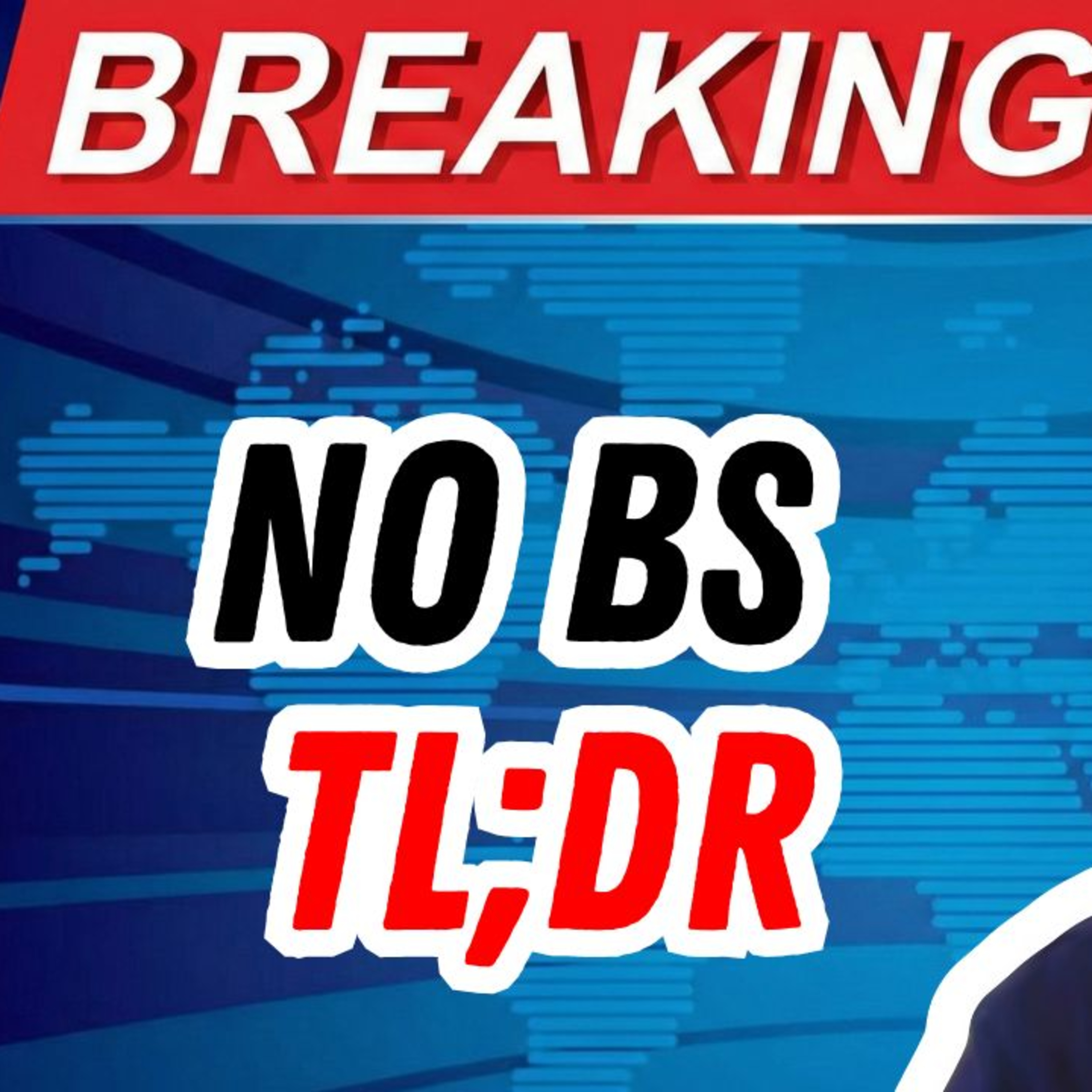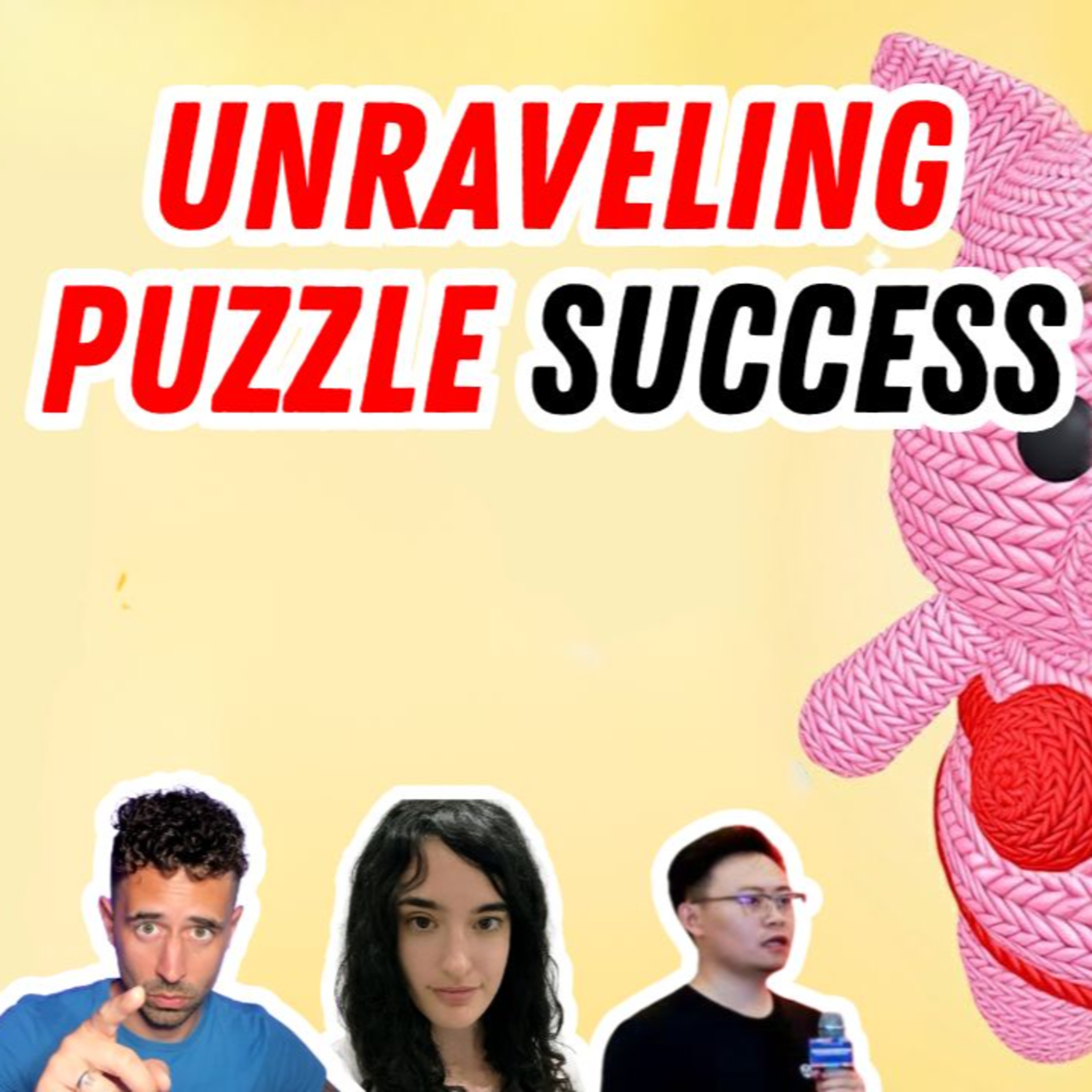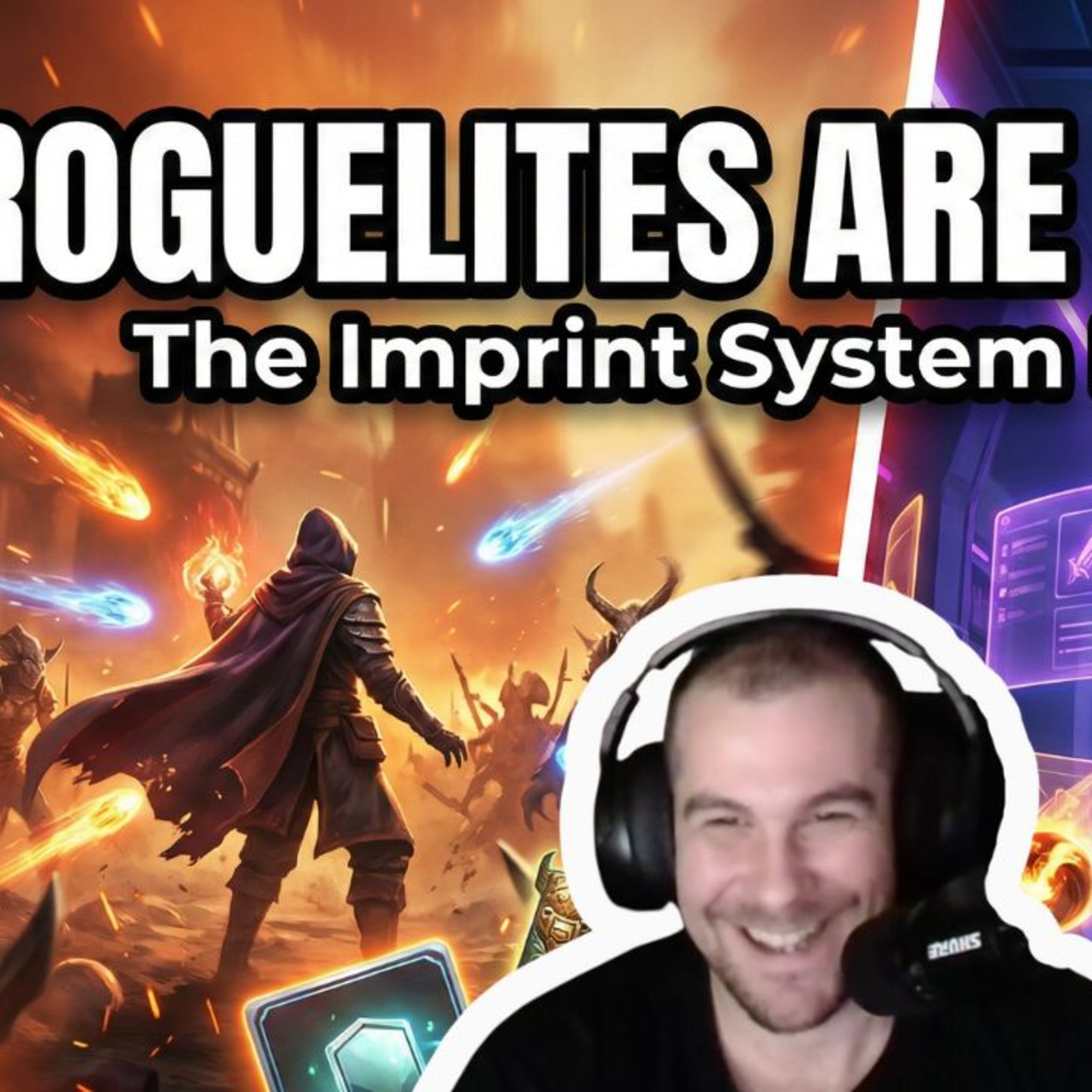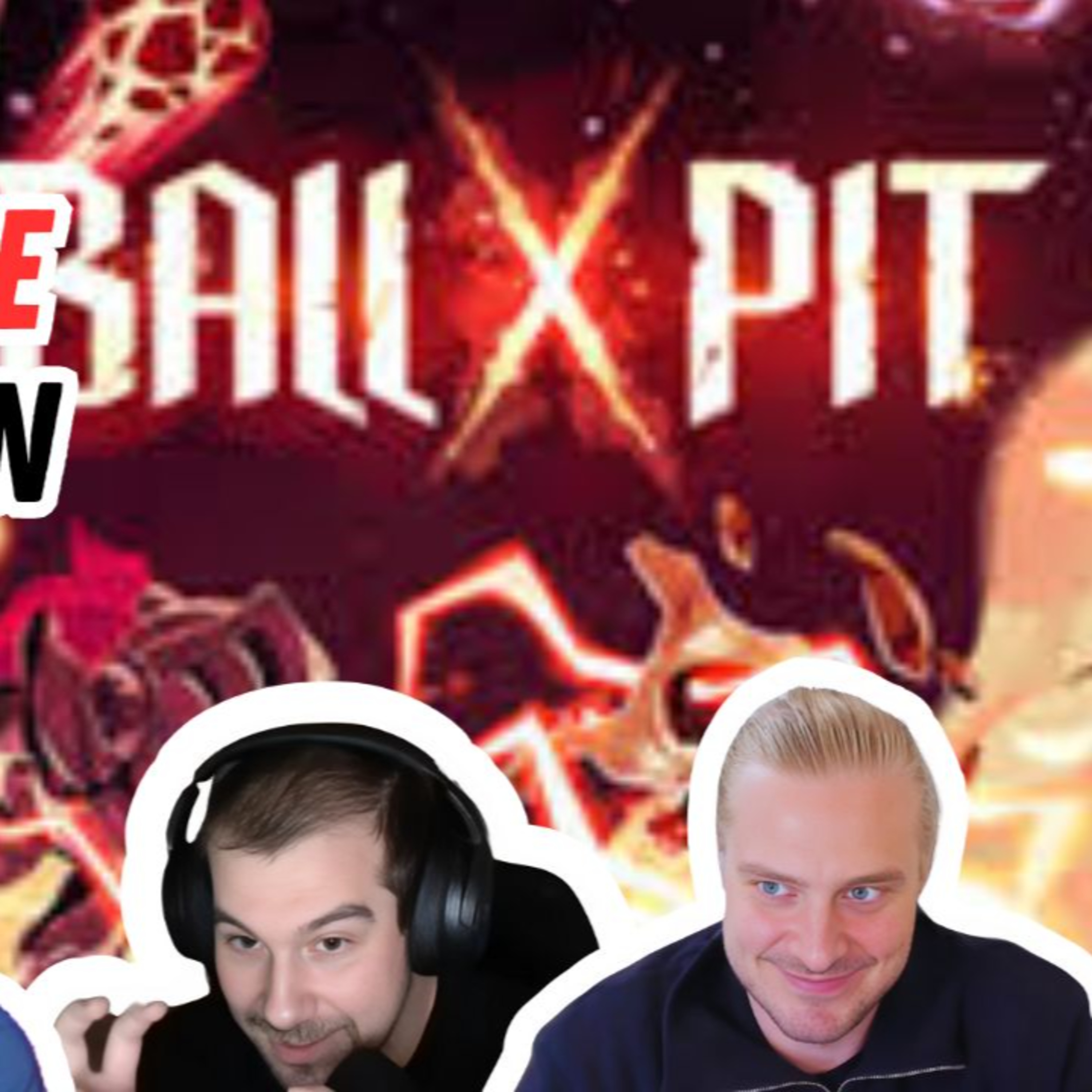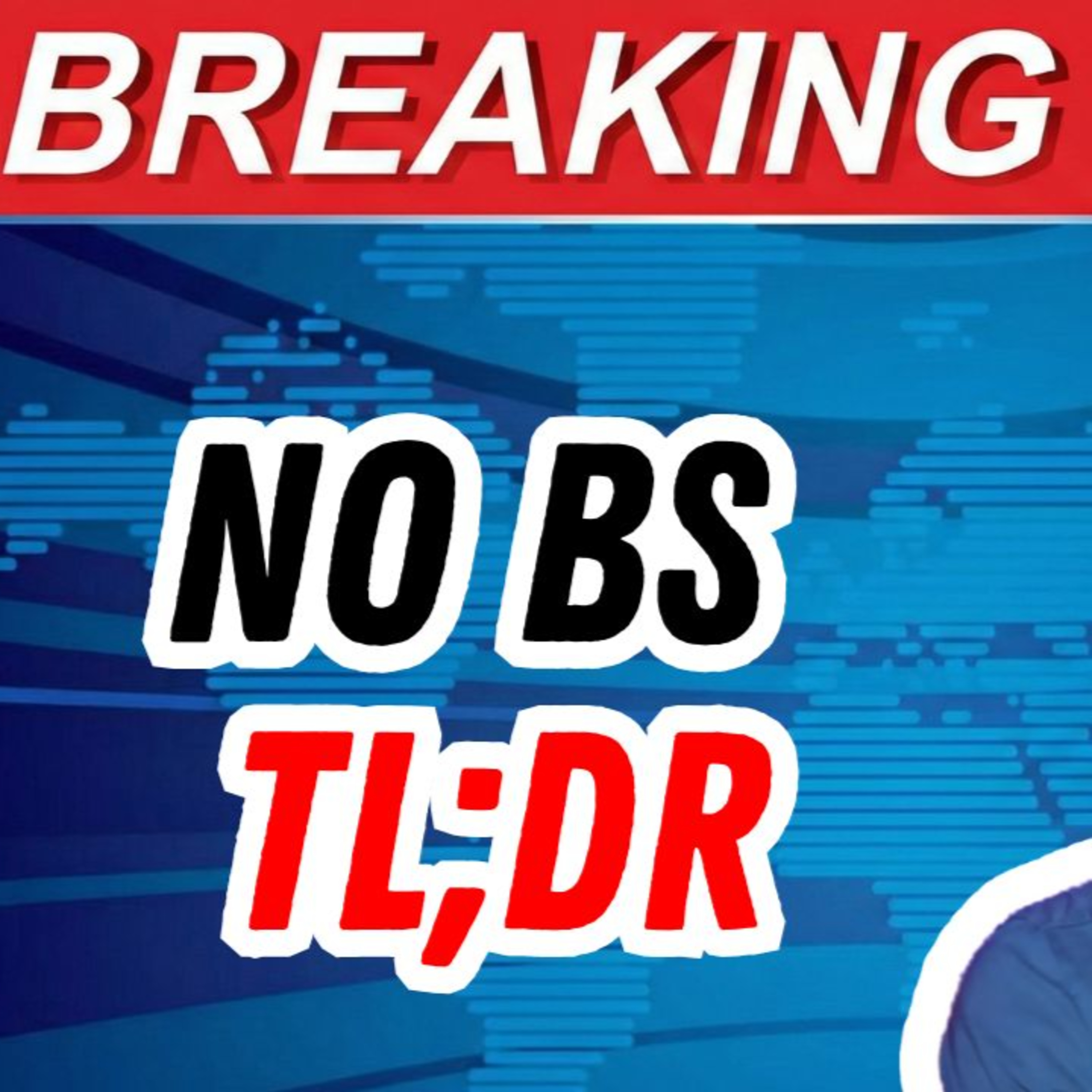A Beginners Guide to UA: The Fundamentals by Matej Lancaric
In this episode, Matej Lancaric provides a comprehensive guide to mobile user acquisition (UA), covering essential terms, metrics, and strategies for beginners and experienced marketers. He emphasizes the importance of data integrity, navigating privacy changes, and the role of creativity in UA campaigns. The discussion also includes insights on leveraging paid, owned, and earned media and the impact of AI on marketing strategies.
This is no BS gaming podcast 2.5 gamers session. Sharing actionable insights, dropping knowledge from our day-to-day User Acquisition, Game Design, and Ad monetization jobs. We are definitely not discussing the latest industry news, but having so much fun! Let’s not forget this is a 4 a.m. conference discussion vibe, so let's not take it too seriously.
Panelists: Jakub Remiar, Felix Braberg, Matej Lancaric
Podcast:
Articles:
https://lancaric.me/ua-manager-life-post-idfa-reality/
https://lancaric.me/influencer-marketing-guide-ua-in-2024/
https://lancaric.substack.com/p/stay-ahead-in-ua-for-2025-my-top
Join our slack channel here: https://join.slack.com/t/two-and-half-gamers/shared_invite/zt-2um8eguhf-c~H9idcxM271mnPzdWbipg
Chapters
00:00 Introduction to User Acquisition
01:15 Understanding User Acquisition Fundamentals
03:11 Key Metrics in User Acquisition
08:47 The Importance of Data Integrity
10:39 Navigating Privacy Changes in User Acquisition
12:31 Creative Strategies for User Acquisition
13:30 Paid, Owned, and Earned Media Strategies
17:09 Building and Engaging Your Own Audience
19:54 App Store Optimization and Content Marketing
23:50 Leveraging Earned Media and Press Relations
25:38 The Role of AI in User Acquisition
---------------------------------------
Matej Lancaric
User Acquisition & Creatives Consultant
https://lancaric.me
Felix Braberg
Ad monetization consultant
https://www.felixbraberg.com
Jakub Remiar
Game design consultant
https://www.linkedin.com/in/jakubremiar
---------------------------------------
Takeaways
UA is a fast-moving field that requires constant learning.
Understanding key metrics is crucial for effective UA.
Data integrity is essential for making informed decisions.
Privacy changes are reshaping the landscape of UA.
Creative strategies must evolve to combat user fatigue.
Paid, owned, and earned media are all vital components of UA.
Building a loyal audience can enhance user engagement.
App Store Optimization is key for visibility and installs.
Content marketing helps build trust and authority.
AI tools can significantly enhance marketing efficiency.
---------------------------------------
Please share the podcast with your industry friends, dogs & cats. Especially cats! They love it!
Hit the Subscribe button on YouTube, Spotify, and Apple!
Please share feedback and comments - matej@lancaric.me
---------------------------------------
If you are interested in getting UA tips every week on Monday, visit lancaric.substack.com & sign up for the Brutally Honest newsletter by Matej Lancaric
Latest article - https://open.substack.com/pub/lancaric/p/match-3d-ua-playbook-real-data-inside?r=7qqaf&utm_campaign=post&utm_medium=web&showWelcomeOnShare=true
Press play and read along
Transcript
Speaker 1 Anyway, TikTok, Google, Apple searches,
Speaker 1 Snapchat, kind of that.
Speaker 1 Twitter, also kind of that. But then we have the other networks and these days, very popular rewarded UA channels like Misplay, All Media.
Speaker 1 Then we have Tabjoy, MyApp3, Adjo,
Speaker 1 a lot of them actually.
Speaker 2
knowledge made of gold and ice. Felix with ads making those coins rise.
Jackup designs world chasing the sky. We're the two and a half gamers, the midnight crew.
Speaker 2
Talking UA adverts and game design, too. Matej, Felix, Shaku, bringing the insight.
We're rocking those vibes till the early daylight. But KUA master eyes on the prize.
Speaker 2
Tracking data through the cyberspace skies. Felix stats colors like a wizard in disguise.
Jackups crafting realms lift us to the highs. Two and a half gamers talking smack.
Speaker 2
Slow hockey sick, got your back. Ads are beautiful, they like the way.
Click it fast, fast, don't delay. Uh-huh,
Speaker 2 uh-huh,
Speaker 2 uh-huh,
Speaker 2 uh-huh.
Speaker 2 Uh-huh.
Speaker 1 Hello, everybody.
Speaker 1 Welcome to this
Speaker 1 episode, which is another monologue episode, and it's my turn again. So,
Speaker 1 today I'm gonna talk about the beginner's guide to a mobile user acquisition. So I'm going to be talking about
Speaker 1 the UA in general.
Speaker 1
Because with over 10 years of UA under my belt, I've seen it all. Well, I haven't, but still, it's briefly about my day in the life of the UA manager.
I will link it in the show notes.
Speaker 1 Everything from the heights that allow me to run this consultancy, which I'm the consultant on the UA side, obviously. If you listen to
Speaker 1 the podcast, you know.
Speaker 1 And,
Speaker 1 well, there's a lot of bullshit that comes with it. So
Speaker 1 the world of UA is moving fast. But before we dive into all of the strategies and hacks, you have to be familiar with the fundamentals.
Speaker 1 So I'm going to talk about the terms, the acronyms, and all the fun stuff that
Speaker 1 I usually
Speaker 1 come together with
Speaker 1 on a daily basis.
Speaker 1 So thanks for the feedback in the last few episodes episodes for the monologues. I think
Speaker 1
all the ASMR stuff was just late night show and fun. I'm going to talk normally on ASMR today.
So, the terms you need to know.
Speaker 1
So, there are tons of acronyms in the industry. It's best to get familiar with the following terms.
Well,
Speaker 1 and honestly, this episode is kind of gonna be very going to very beginning,
Speaker 1 well, beginner's guide so
Speaker 1 it's all beginning of the UA so all the fundamentals if you are skilled enough thank you very much this is not for you but if you are new to the UA this is definitely for you so ASO is an app store optimization which is
Speaker 1 an activity that inc that help you increasing the app visibility within the app stores to drive more installs.
Speaker 1 Then we have attribution, which is kind of assigning value to different actions of the users that they've taken until they completed the conversion, or
Speaker 1
which players coming from which UA channels. So attribution helps you identify the players from Facebook, Google, TikTok, and all the other channels.
A plug-in as well.
Speaker 1
Churn, it's the number of users who uninstall your app within a time period. Helps measure stickiness.
Impressions, how many times an ad is seen by someone.
Speaker 1 So how many times your ad or creative was served
Speaker 1 on the UA channels. Then you have organic app installs, which are app installs driven through non-paid advertising, such as
Speaker 1 anything about except paid content, social media,
Speaker 1 organics. Well,
Speaker 1 thing is, with organic app installs,
Speaker 1 these days, we don't talk about organics, we talk about unattributed installs because everything comes down to UA. If you don't run UA,
Speaker 1 it's very rarely to get discovered. And then we have the UA as a
Speaker 1 user acquisition, which is driving new users to your mobile app through marketing and advertisement. So, I also brought about some tips that help you grow in 2025, which is a little bit more
Speaker 1 for not experts, but more advanced,
Speaker 1 talking about UA, diversification of the UA, talking about how to win on TikTok and other different channels.
Speaker 1 So, definitely check it out in the show notes.
Speaker 1 So, what are the key metrics that you need to know absolutely? Because UA is
Speaker 1 an Ambers game. Remember these metrics, like
Speaker 1
to bang. You need to remember these metrics.
Absolutely. Conversion rate, which is a percentage of people who are seeing your ad and download it.
So think about it as a click to installs.
Speaker 1 Cost per install, it's
Speaker 1 how much money you pay actually for your install.
Speaker 1 Then we have cost per action,
Speaker 1 which again is cost for a certain action. It can be cost per purchase, so how much money you need to pay for
Speaker 1 a payer, or
Speaker 1
the action can be basically anything else. It can be a tutorial completion, it can be level 100, achieving level 100, it can be played 10 levels and whatever else.
So definitely that.
Speaker 1 Then we have CPM, which is cost per milli, measures the cost of
Speaker 1 1000 impressions. Check this metric to also see what kind of competition you have as well.
Speaker 1 So then we have IPM, which is installs per milli, basically measuring numbers of installs per thousand impressions. IPM is more accurate than CPM because we are talking about installs.
Speaker 1 CPM is just cost four thousand impressions now. We are measuring effectiveness of the actual campaigns, and not even campaigns, but creatives.
Speaker 1 Then we have CAC, which is customer acquisition cost, which is measuring the total return on investment of all marketing.
Speaker 1 Kind of, yes, but also how much money you need to spend to actually acquire your customer.
Speaker 1 Then we have lifetime value, total estimate value that is generated or a certain period of time
Speaker 1
from the user that installed your app. So higher the L T V means you can spend more.
If your L T V is lower than the CPI, you are losing money. And CPI versus L T V equation.
Speaker 1 I was talking about this specific issue or not issue or like how to and actually understand this in the previous episode and the previous monologue. So check this check it out for sure.
Speaker 1 Then we have average revenue per user, just measuring the amount of money the
Speaker 1 user generates, just average.
Speaker 1 And then we have retinal ad spend, which is the most important KPI. Total revenue generated from
Speaker 1 the installs or the total advertising spent.
Speaker 1 So, what do we have then?
Speaker 1 Well, why is it so hard? And the thing is,
Speaker 1 not even in these days, but A,
Speaker 1 everybody obviously can run a campaign and everybody thinks they understand UA and therefore they're talking about it.
Speaker 1 And then B,
Speaker 1
well, I've heard 10 million times UA is dead. Well, it's not.
Anyway.
Speaker 1 Data runs the world, especially the mobile world. So how we collect and use data changes every day, which is one of the biggest pains in the ass of the UA manager.
Speaker 1
Data can really get dirty. First, you know, you need to make sure your data is trustworthy.
Are the sources giving you the right info? Are some conversions counting as double?
Speaker 1 Or are some conversions not counting at all? Keeping your data clean has to be the priority, or else
Speaker 1 you will work with fucked up numbers and you will be out of the job, I guess. there's nothing worse than making decisions based on wrong data
Speaker 1 always when you run a new campaign always
Speaker 1 do a data health check always run a small campaign for example in philippines where you check if everything is working correctly you cross-check
Speaker 1 attribution provider, you cross-check the UA channels, and if you have your own internal data and dashboards, you cross-check that, all of it. It doesn't really need to be big spend.
Speaker 1
It needs to be $20, $30, $40 spent. So you are not 100%, but 300% sure that you are looking at the right data.
Because
Speaker 1 tomorrow is not guaranteed.
Speaker 1 Not at all.
Speaker 1 Because you never know when another privacy or changes affect
Speaker 1 not even the data, but the whole ecosystem.
Speaker 1 Because, you know, Apple
Speaker 1 privacy changes caused a big effect how we collect the data.
Speaker 1 And, you know, there is the, well, it's already 2025, it should be already done, but Google will follow Apple's lead as users become increasingly worried about the sharing data with
Speaker 1 advertisers. That means you must stay on the top of the sudden changes because the only constant in the mobile marketing in gaming is the change.
Speaker 1 And you need to be very creative about the approach of or how you approach data and how you approach your marketing mix. Because you need to be testing, testing, testing all the time.
Speaker 1 Well, uh and all of the t not only testing, but you need to be well testing as well. You need to be testing the
Speaker 1 thanks to the privacy changes, all the sk SK and networks
Speaker 1 conversion schemas. We have now well,
Speaker 1 to be honest, not that many people actually still use the scan campaigns either on Facebook or on TikTok because we have ADC, which is still advanced dedicated campaign. I still
Speaker 1 you see, I still I still don't know all the acronyms, and I've been 11 years in the industry, I still can't figure it out. Anyway, uh, we have AEM, which is aggregate and even measurement.
Speaker 1 Uh, Both of these,
Speaker 1
they say they are almost real-time measurement for iOS campaigns. Well, almost.
Anyway, so UA requires a strong working knowledge of numbers and rigor of testing, obviously.
Speaker 1 But you also need an intuition on what creatives will perform the best and
Speaker 1 perform well.
Speaker 1 The creative production isn't just limited to ideation, but also includes managing the budgets, scheduling, and working cross-functionally.
Speaker 1 Also, the creative fate is a real thing. Users are increasingly developing banner blindness and video blindness, and you need to refresh creatives on a weekly basis.
Speaker 1 And the thing is, it's not only about
Speaker 1 the fact that players are blind or they're becoming more
Speaker 1 blind over the time when they see your creatives, but also you need to refresh creatives because of how the algorithm works. So, check out our creative trends, by the way.
Speaker 1 We are doing this on a monthly basis, and the next episode is coming live very soon.
Speaker 1 So, we have three tips of UA, which is paid, owned, and earned. So, all of these
Speaker 1 different
Speaker 1 terminologies and the keywords are quite important. We don't really use all of them, and I kind of am not using like a lot of them because I'm the UA manager and I trust paid, and I like to be on
Speaker 1 to be in control of the budgets. Anyway, so there are hundreds of ways how you can go about acquiring users.
Speaker 1 To make things easier, you can bucket all UA channels into three categories for all the UA activities, which I said, paid, earned, and owned.
Speaker 1 So let's say paid media, which is dollars for ads, paid media, advertising on platforms to drive conversions, kind of build brand awareness, but also, you know, mainly generate traffic, which includes display ads, paid search, YouTube, all of it, the billboards, basically everything that you think about and you pay for it.
Speaker 1 You know, most common paid media channels these days, Facebook, well, Meta, sorry, guys. I still still
Speaker 1
call you Meta. Oh, fuck, Facebook.
Anyway, TikTok, Google, Apple searches,
Speaker 1 Snapchat, kind of that.
Speaker 1
Twitter, also kind of that. But then we have the other networks.
And these days, very popular rewarded UA channels like Misplay, All Media.
Speaker 1 Then we have TabJoy, MyApp3, Adjo,
Speaker 1
a lot of them actually. And I think my next monologue episode is going to be about rewarded video, not video, rewarded UA channels.
And then we have Preloads, which is a digital turbine,
Speaker 1 which I haven't touched for a long time.
Speaker 1 Anyway.
Speaker 1 So we have ad networks.
Speaker 1 Ad net which are which apps need to be integrated with
Speaker 1 premium ad networks, but this only
Speaker 1 if you want to be apps need to be integrated only
Speaker 1 because of the ad monetization, not because of the UA.
Speaker 1 If you want to run UA on ad networks,
Speaker 1 you need attribution provider, you need singular,
Speaker 1 adjust, rap slayer,
Speaker 1 or
Speaker 1 airbridge.
Speaker 1 So
Speaker 1 there are different
Speaker 1 SDK networks and ad networks these days. The biggest one, obviously, uploading.
Speaker 1 So then we have IronSource, then we have Unity, which are basically the same company. We have Wangle, I don't think that anyone runs this anymore, anyway.
Speaker 1 Atcon, which is almost that also, but we have Mintegral, which is very popular.
Speaker 1 So
Speaker 1 then
Speaker 1 after the
Speaker 1 SDK networks,
Speaker 1 we have social media, which is Facebook and TikTok, and then we have Google at the same time, and then we have SDK networks. And then, obviously, there's influencer marketing.
Speaker 1 TikTok is kind of dominating every phone screen across the world, fueling the creator economy. We use quite a lot of TikTok creative challenge.
Speaker 1 Well, now it's called TikTok One, which is a marketplace for creators that build creatives for you.
Speaker 1 But then, you know, building a relationship with influencers can be extremely profitable you a channel when it's done right.
Speaker 1 You're essentially leveraging
Speaker 1 influencers reach to promote your app in a way you probably can't. You've dedicated the time and effort to build the trust of their loyal audience.
Speaker 1 But
Speaker 1 it's not scalable, in my opinion. It can work well,
Speaker 1 but
Speaker 1 as an additional channel, if you bet your UA strategy on influencers,
Speaker 1
I don't think you will go far. That's my opinion.
But I've wrote about it,
Speaker 1 about how to execute an influencer program. You should check out my guide, which is also going to be in the show notes.
Speaker 1 Then we go to own media, because as Eric Saufford says, everything is an ad network. Well, you're building your audience, right? So this transitions perfectly to the category,
Speaker 1 which, you know, although you may
Speaker 1
there's ton of value having a direct communication with your target audience. It's also because we are tight that's because we are tied to the algorithm.
Even you know, even if
Speaker 1 you have 500,000 followers, there is no guarantee your piece of content will reach them. In 2023, actually, Instagram had an average of reach like 9% of your total followers.
Speaker 1 And then there was 18% decrease in organic reach year over year. Facebook's average reach is abysmal 4%.
Speaker 1 So,
Speaker 1 you know, own channels, including our website, blog, app store pages, email lists, if even SMS list. I'm not sure if anyone uses that anymore, but still it can be interesting, really powerful.
Speaker 1 At least my email list, well, I use, I do have
Speaker 1 a newsletter. So if you build a loyal, engaged audience, all of these assets are essentially free and you're not bound to the fickleness of the algorithms.
Speaker 1 So, you know, you think about this of the email list and SMS list of whatever list you can get wait lists.
Speaker 1 You have a landing page,
Speaker 1 you want to launch a Steam game, or even for your new game, and when you are testing marketability or if you do any testing prior to the development, you can still collect emails.
Speaker 1 And that's a pretty powerful thing that nobody uses anymore, which is a shame.
Speaker 1 So, you know, because own channels also provide an opportunity for you to start building this loyalty with your existing users already, or with the users early on, and increase engagement, re-engage these users, or upsell subscription.
Speaker 1 That's what I do. Anyway,
Speaker 1
you start also building the community on Discord, Reddit, or wherever early on. You don't need to be a Web3 game, and you still can have a community of thousands of users.
Why not?
Speaker 1 Then we have ASO, App Store
Speaker 1 optimization, and this is your own asset, right? So, App Store optimization is optimizing your App Store listing page to show up higher in the rankings for certain keywords.
Speaker 1 It's really hard, actually, but higher the rankings on search
Speaker 1
mean more visibility, clicks, and installs. To make your app more discoverable, you can optimize your store page.
Headline, descriptions using highly relevant keywords, no stuffing of keywords.
Speaker 1 There's plenty of tools that can help you with the process, mobile action app to be explicit metrics, you name it. It's also crucial to test your app store,
Speaker 1 icons, screenshots, and visual appearance of your store.
Speaker 1 The success of
Speaker 1 ASO
Speaker 1 hinges on adequate keyword research, measurable A-B testing.
Speaker 1 Then we have content marketing, obviously, which content marketing is an interesting thing, is
Speaker 1 hinging on one thing,
Speaker 1 consistently delivering value to an audience to build trust over time. This is the key to building audiences regardless of the platforms of choice.
Speaker 1 Content marketing can include everything from guides like this one, or videos like this one, or podcasts like our podcast, Evo's infographics, and whatever else, just to, you know, to every piece of content must serve
Speaker 1 of the following purposes: entertain, persuade, inspire, or educate. And we have the communities that I mentioned, because that's really important.
Speaker 1 We have
Speaker 1 social, we are social creatures, and we love to connect with others with the same hobbies, passions as us.
Speaker 1 So you can advertise your app and content in niche communities, whether it's Facebook groups, Reddit dimension, Discord dimension. You build Slack
Speaker 1 also,
Speaker 1 and
Speaker 1 you engage. And with the conversations you have and the relationships you build, you can provide to be really fruitful.
Speaker 1 So if you have the resources, you can also consider building a community of your own. That's what we did with our Slack channel for mobile, for two and a half gamers.
Speaker 1 And then we have referrals and loyalty programs.
Speaker 1 I've wrote about loyalty programs with Supercell, My Games, and other companies, which they actually have their own influence and they pay them to promote their games. So
Speaker 1 why not advertise to your most loyal users? Marketers tend to shy away from this, but customer marketing is ultimately a win-win.
Speaker 1 You can incentivize an in-a-brief order-free subscription for every referral they make. Yeah, this won't cost you a dime.
Speaker 1 And then we, as I talked about, the email marketing, it's all as long as the emails you collect are legit, 100% of your emails are going to be delivered to your marketing marketing list.
Speaker 1 This is the most direct way you can reach your audience. Think about it as
Speaker 1 this.
Speaker 1 The vast majority of us check our emails from our phones, which makes it easy to drive conversions.
Speaker 1 Email marketing can range from everything like promoting your latest blog post about your new build, sharing your exciting updates, as I mentioned, offering discounts or upsells.
Speaker 1 Think about this: web shops as well, right? You can use your email marketing for promoting your web shop. And web shop means more money to your pocket and not to Apple or Google.
Speaker 1 Email is a fantastic way to establish a strong relationship with your audience, but only when it's really relevant, obviously.
Speaker 1
You can also request users to fill out surveys, response to emails directly to others. It's all about the engagement.
The last thing you want to do is send weekly emails.
Speaker 1 The last thing you want to do is to send emails weekly just for the sake of it. Instead, carefully segment your audience and consistently deliver content that is highly relevant to them.
Speaker 1 And be sure to keep it short. Then we have push
Speaker 1 and earn media, which is
Speaker 1
building brand recognition. Building brand recognition.
You have earned media, which is the exposure you gain from the other channels without paying for it.
Speaker 1 This is like getting invited to a new segment of of
Speaker 1 journalists and influencers talking about your app.
Speaker 1 Word of mouth, it's perfect and most obvious form of earned media. You want people to rant and rave about your game to their entire network.
Speaker 1 Granted, you have a great app, there are ways to help encourage people to share it.
Speaker 1 Then we have press as well, because this is kind of still the old way how to do stuff. But if you have a PC game, it's part of your UA or marketing strategy.
Speaker 1 Blogs, online publications, podcasts, hello
Speaker 1
are a great way to drive awareness and instals. You would be surprised.
To do so, you need two things: assets, which is media kit, website,
Speaker 1 and outreach. While you can probably scrape thousands of journalist emails and spam them,
Speaker 1 you're probably going to get blacklisted for that, but you should focus on establishing a real relationship with journalists, bloggers, and influencers.
Speaker 1 I cover this more in depth in a PC marketing guide.
Speaker 1 So, should you focus on organic UA or paid? Well, there is nothing as organic UA, by the way, but finding the right paid channels that work for you is key to scaling your UA.
Speaker 1 It's not a dichotomy, it's strong organic presence definitely helps boost your paid conversions because of
Speaker 1 increased brand recognition and trust. Just take a look at my breakdown of Duolingo's user acquisition strategy.
Speaker 1 Well,
Speaker 1 there is also
Speaker 1 these days, how is AI impacting UI? Well, AI is affecting everyone. More specifically, AI-powered automation tools are helping more marketers
Speaker 1 automatically find new audiences and tweak their creatives. I work with AI on creatives on a daily basis.
Speaker 1
It helps a lot. AI-generated creatives can help marketers create millions of variations to test at scale.
You should definitely check it out.
Speaker 1
All right. I think that was it for me today.
Thank you very much for tuning in.
Speaker 1 Please share your comments in the, well, share your feedback in the comments. Also,
Speaker 1 if you have any other topic
Speaker 1 you want me to cover, please let me know.
Speaker 1 I will continue to drive the UA for beginners and to talk about the UA in general in the
Speaker 1
next few episodes. So thank you very much for listening.
Share, comment, join our Slack channel. See you there.
Thank you very much.

